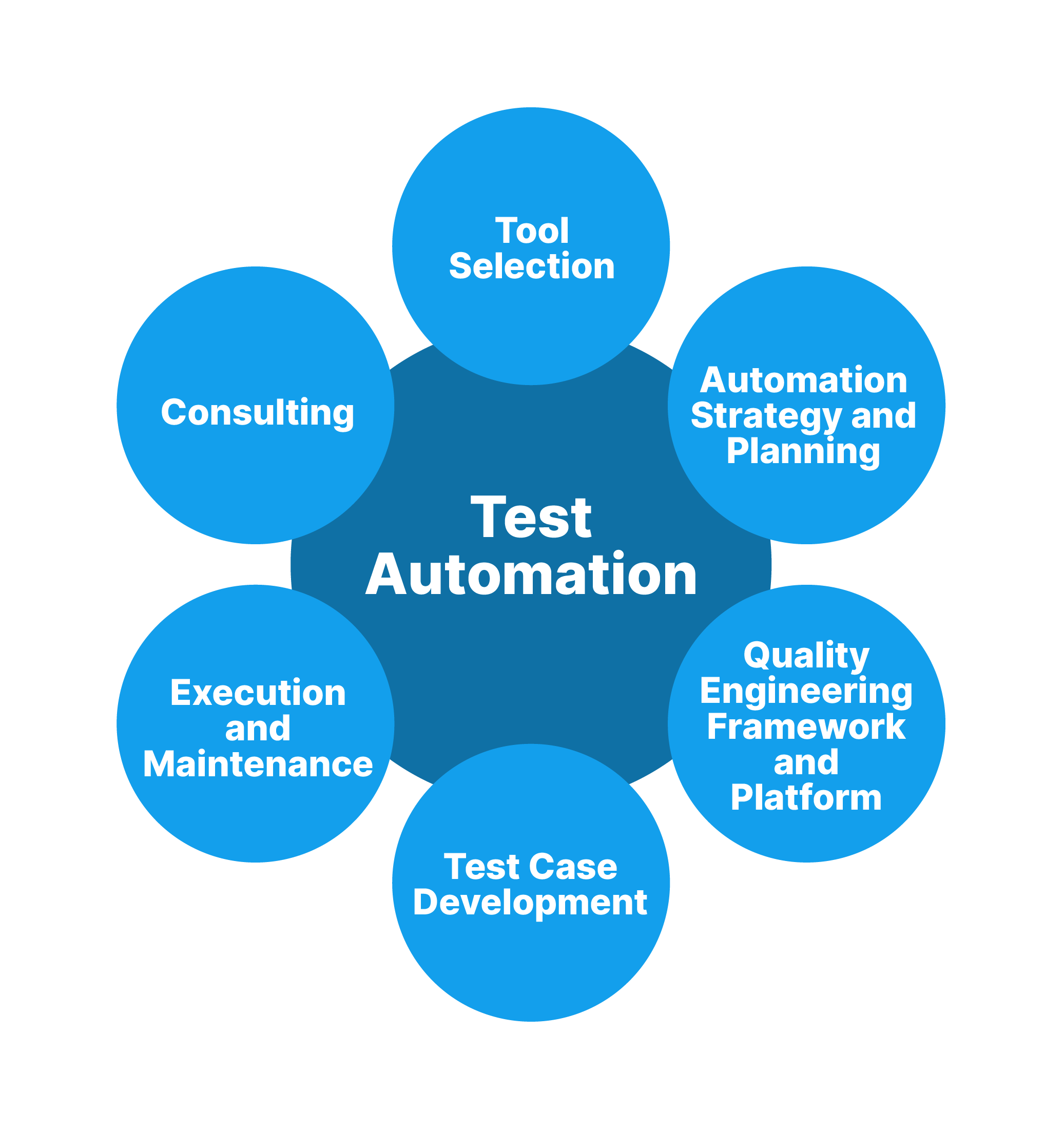Exploring the Future of Automation Testing in Software Advancement
Exploring the Future of Automation Testing in Software Advancement
Blog Article
From Handbook to Automated Testing: A Comprehensive Overview to Transitioning Efficiently and Efficiently
In the world of software application screening, the change from handbook to automated processes has actually ended up being a progressively essential transition for organizations seeking to improve efficiency and accuracy in their screening practices. As innovation proceeds to advancement, the demand for effective and smooth automatic screening approaches has never been much more pressing. The journey from manual to automated screening is not without its challenges, however when come close to strategically and with a clear plan in mind, the benefits can be considerable - automation testing. In this thorough overview, we will check out key actions and considerations necessary for a successful shift, from the first choice of devices to the combination of automation right into existing operations. Remain tuned to discover the understandings that will aid lead the way for a smoother and much more reliable testing process.
Benefits of Automated Checking
Automated screening provides various benefits, improving performance and accuracy in software application advancement processes. Automated tests can be run at the same time on numerous devices and operating systems, drastically speeding up the testing stage contrasted to hands-on screening.
In addition, automated testing makes certain a greater level of accuracy in detecting flaws. Consistency in screening is also enhanced, as automated examinations implement the same steps specifically each time they are run.
Selecting the Right Tools

First of all, evaluate your goals and requirements. Understand the range of your job, the innovations entailed, and the ability of your team. This analysis will aid you figure out the capacities and features you call for in your testing tools.
Secondly, think about the compatibility of the tools with your existing systems and procedures. Smooth integration with your current software application advancement lifecycle is vital to make sure a smooth transition to automation.
Furthermore, assess the scalability and flexibility of the devices. As your testing requires develop, the tools need to be able to adjust and suit changes successfully.
Lastly, consider the support and community around the devices. When implementing automated testing, durable support and an energetic customer area can give beneficial resources and help. By meticulously thinking about these facets, you can select the right devices that straighten with your demands and established the phase for a successful shift to automated screening.
Writing Efficient Examination Scripts

When crafting test scripts, it is necessary to think about the particular needs of the software program being tested and guarantee that the scripts address all vital functionalities. Detailed and clear calling conventions for examination manuscripts and examination situations can improve readability and maintainability. Furthermore, incorporating mistake handling devices within the examination manuscripts can aid in determining and attending to issues without delay.
Additionally, arranging examination scripts right into modular parts can improve reusability and scalability, minimizing redundancy and enhancing performance in test manuscript maintenance. Regular testimonials and updates to evaluate manuscripts are vital to equal advancing software requirements and capabilities. By adhering to these concepts, testers can develop effective and robust examination scripts that add considerably to the success of automated testing processes.
Integrating Automation Into Workflows
By perfectly incorporating automated testing tools like Selenium or Appium into the software program development lifecycle, groups can attain faster responses on code modifications, leading to quicker pest detection and resolution. This assimilation permits for continuous testing throughout the growth process, guaranteeing that any kind of issues are determined early on, resulting in greater software application high quality. Appropriate assimilation of automation tools needs partnership between growth, screening, and procedures teams to establish a unified workflow that optimizes efficiency and performance in providing premium software application items.
Making Certain a Smooth Shift
Efficiently transitioning to automated testing involves careful planning and mindful execution to optimize and decrease interruptions performance in the software advancement process - automation testing. To make certain a smooth shift, it is vital to start by carrying out a complete assessment of the existing screening processes and determining areas where automation can bring one of the most substantial benefits. Involving with all stakeholders at an early stage at the same time, including programmers, testers, and job managers, is vital for amassing assistance and buy-in for the automation initiative
Interaction is vital during this shift stage. Clear communication of read the article the objectives, advantages, and expectations of automated screening aids to take care of any type of resistance or issues that may occur. In addition, supplying ample training and sources for employee to upskill in click here now automation devices and techniques is vital for ensuring a successful transition.

Conclusion
Finally, transitioning from manual to automated testing uses many advantages, including raised effectiveness and integrity. By choosing the appropriate tools, creating efficient test scripts, and incorporating automation perfectly right into operations, organizations can ensure a effective and smooth transition. It is essential to embrace automation as a valuable asset in software program testing procedures to improve overall high quality and performance.
In the world of software application screening, the shift from guidebook to automated procedures has actually become an increasingly essential change for companies seeking to improve efficiency and accuracy in their screening practices. Automated tests can be run at the same time on numerous devices and operating systems, substantially speeding up the testing stage contrasted to hands-on screening. Uniformity in testing is likewise enhanced, as automated examinations carry out the exact same steps exactly each time they are run.To guarantee the successful implementation of picked screening tools, the production of effective examination scripts plays an essential duty in validating the functionality and performance of automated check here procedures - automation testing. By complying with these principles, testers can create reliable and durable examination manuscripts that contribute significantly to the success of automated testing procedures
Report this page